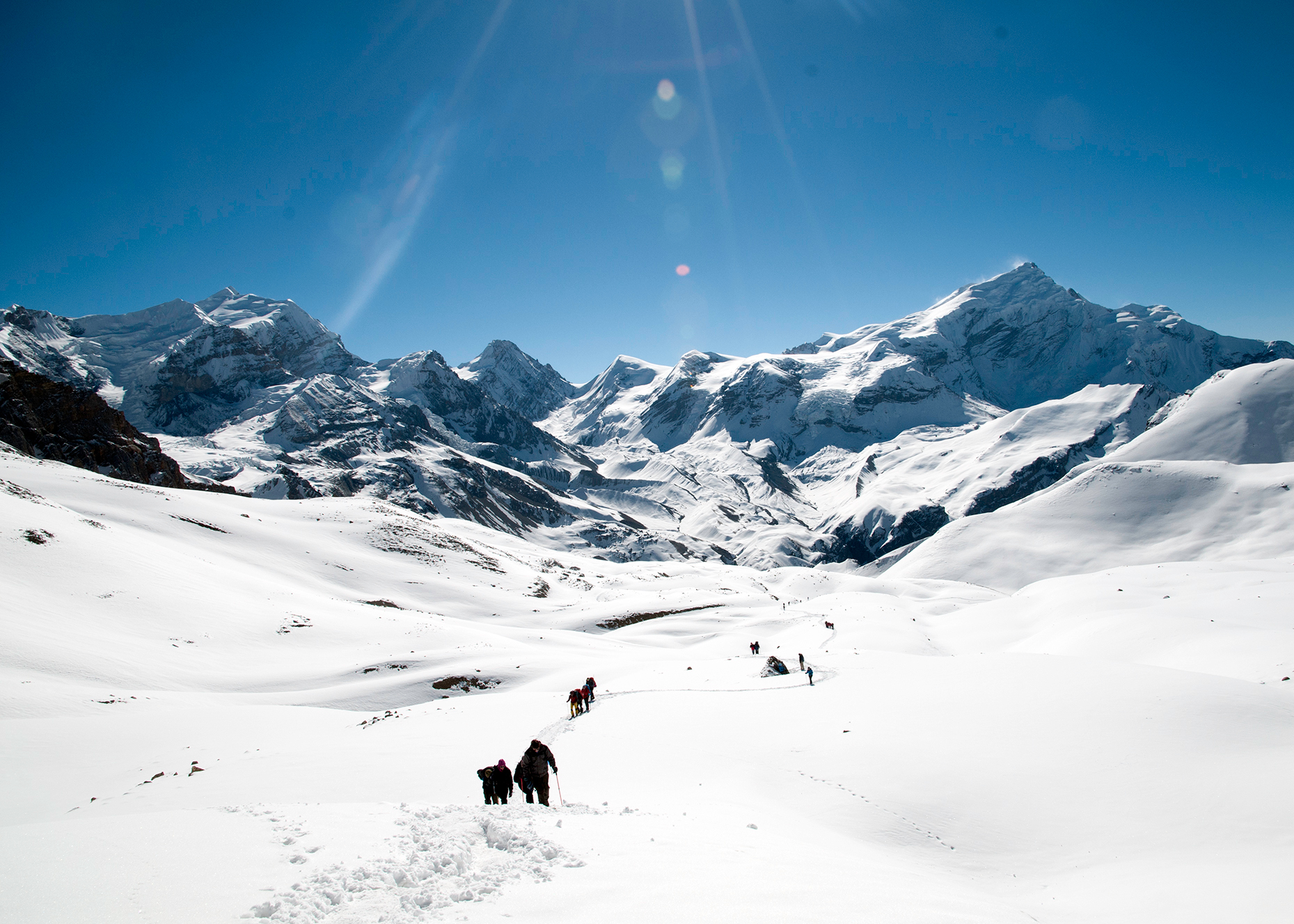
The simple answer to that question is very safe – Nepal is on a par with most other mountainous destinations when it comes to trekking safety. Accidents do happen, some unavoidable, some avoidable, but for the vast majority of the 100,000 or so trekkers who visit Nepal every year, the biggest upset they will experience on a trek is blisters. This has not stopped a flurry of newspaper reports following the October blizzard.
In the immediate aftermath of the disaster, many blamed the Nepali authorities for failing to predict the severe weather and for failing to inform the hundreds of trekkers who were already on the trails, heading into the heart of the storm. Many also blamed the local guides who led groups into danger despite the warning signs, and ended up buried alongside their clients in the snows atop the Thorung La.
In turn, the authorities in Nepal were quick to blame unprepared backpackers, heading for the hills without proper equipment or properly trained mountain guides, and desperate to keep to their schedule regardless of the conditions. The death toll, almost evenly divided between Nepalis and foreign trekkers, would seem to suggest that all these factors played some part in the disaster, but the biggest culprit would seem to be complacency.
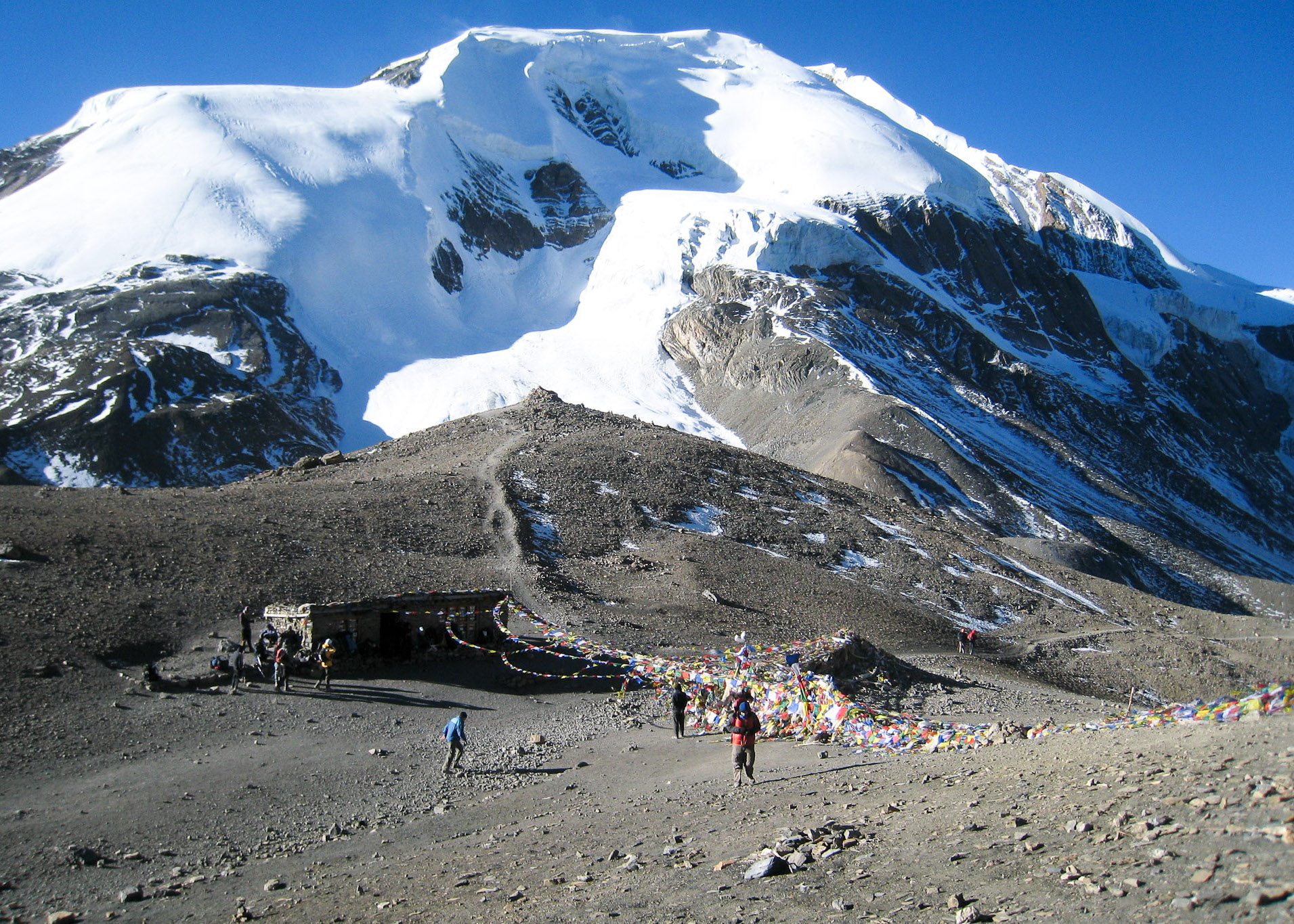
For all the modern conveniences on the so-called Apple Pie Trail – from mobile phone charging to Mars bars for sale at 5000m – the Annapurna Circuit trek climbs into the one of the most challenging environments on earth. The highest point on the trail, the Thorung La, is perched at a breathless 5416m above sea level, just 200m lower than the summit of Europe's highest mountain. The crossing of the pass must be staggered over four or five days to reduce the risk of Acute Mountain Sickness (AMS) and shelter on the final stages is limited to a handful of rustic teahouses.
Nevertheless, in fair weather, the climb is no more risky than walking in any other mountain area anywhere in the world. Assuming you have taken the proper precautions to avoid AMS, the ascent offers a breath-taking glimpse of what life is like for the mountaineers who risk life and limb to haul themselves up the highest mountains on earth, but without the danger of dangling at the end of a rope.
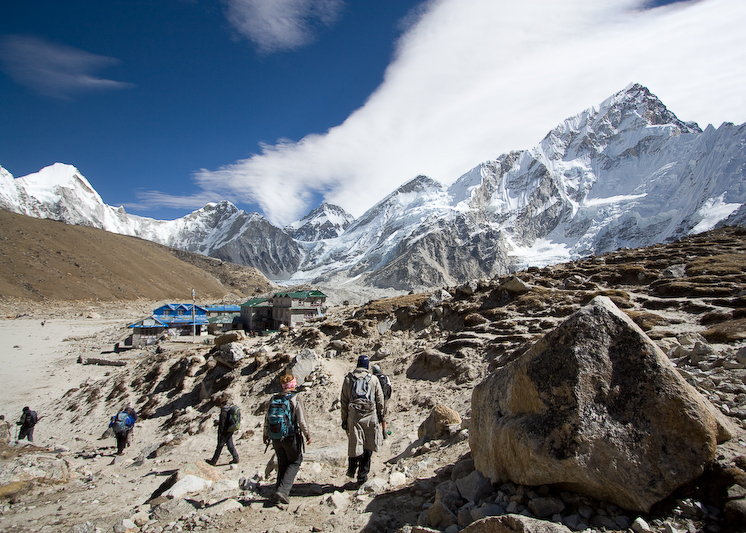
That is the perception. The reality is that risk is always present in a mountain environment. The weather can change unexpectedly; rockfalls and avalanches can happen; it is possible to get lost and veer off the trail. The lack of preparedness from the authorities and from guides, as well as from some of the trekkers caught up in the disaster, would seem to indicate that the general wisdom that 'fortune favours the prepared' was being widely ignored.
Following the disaster, the Nepali government has promised to create a new weather warning system and to mandate that trekkers must carry a GPS navigation system and employ a local guide, all of which may help make the trails safer. However, the effectiveness of any new system will depend on how well it is funded and enforced. There is a always a risk that financial considerations could override safety concerns, both amongst trekkers and the authorities.
If the trails are closed and conditions are better than expected, the authorities will be accused of overkill; if they leave the trails open and conditions deteriorate, they will be accused of putting trekkers in harm's way. Arguably a greater benefit could come from increasing general awareness of the possible risks of mountain trekking and things that trekkers can do themselves to reduce the dangers.
Thanks to decades of campaigning by organisations like the Himalayan Rescue Association (http://www.himalayanrescue.org), trekkers in the Himalaya are well informed about the dangers of AMS. Most people plan their treks to avoid sudden increases in altitude, taking the appropriate rest days to help with acclimatisation. Most people also know what to do if they show symptoms of AMS – namely descend - though some still ignore the warning signs and have to be evacuated from the mountains with high altitude pulmonary edema (HAPE) or high altitude cerebral edema (HACE). However, fewer trekkers would have a ready answer to the question 'what will you do if the weather turns bad on your trek?'
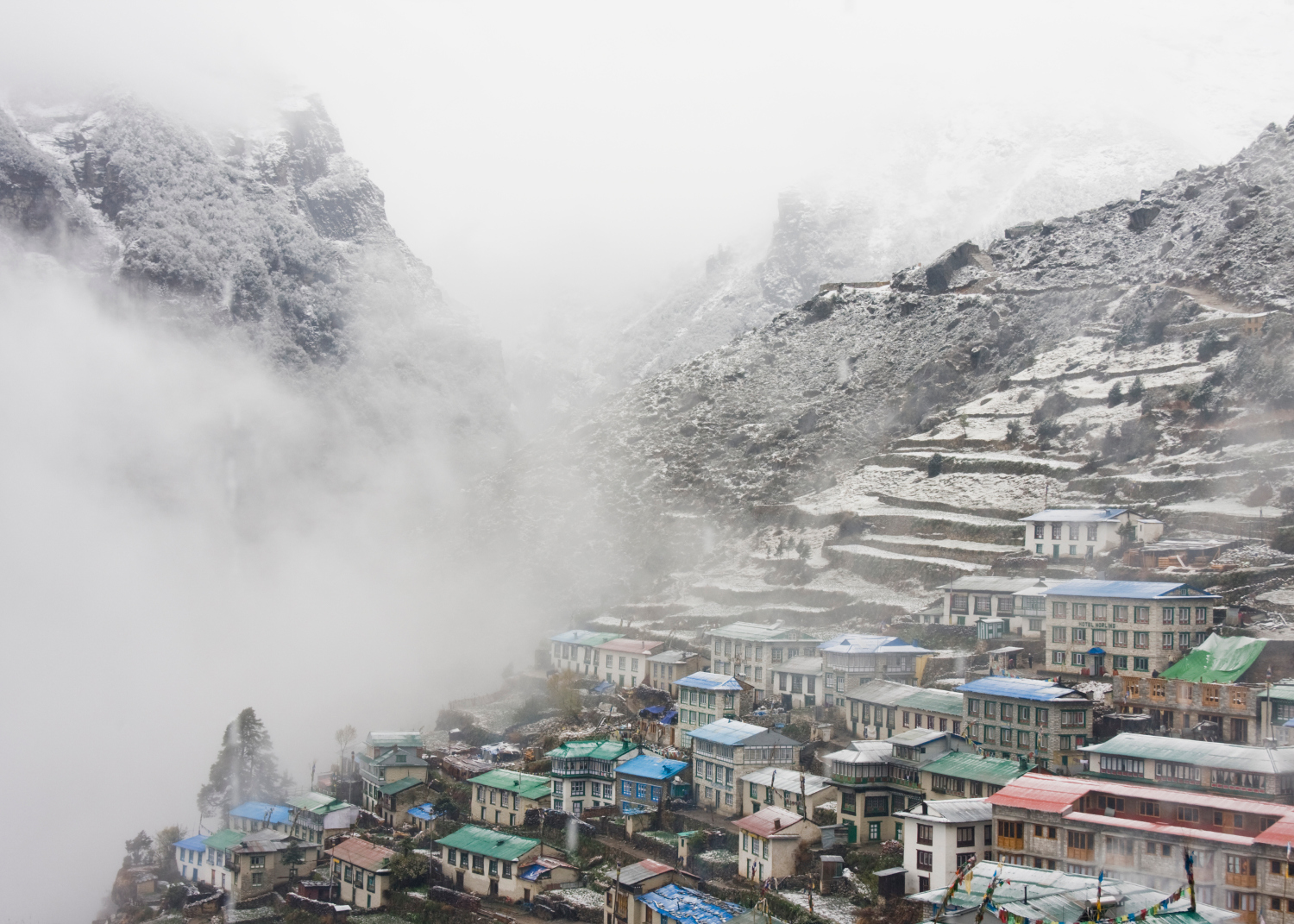
The weather is probably the biggest single risk factor for trekkers in the mountains. It is always a sensible precaution to check local weather forecasts before you set off and to get updates from local people as you trek. The established trekking season, from October to December and March to April, generally offers the best weather for trekking, but storms can still occur, particularly at the end of the Indian Ocean cyclone season in October and November. On any trek, if the weather starts to deteriorate, seek shelter – pushing on through rain and snow is a surefire way to get cold and wet, two things you don't want to be in a survival situation.
At altitude, as at sea level, when weather conditions turn bad the fundamental human need is for shelter. Hypothermia can occur within hours if you are exposed to wind, rain and cold temperatures, and if the drop in body temperature is untreated it can lead to unconsciousness and death. In the exposed environment of the Himalaya, everyone should be aware of the symptoms of hypothermia and have some means of keeping warm in an emergency.
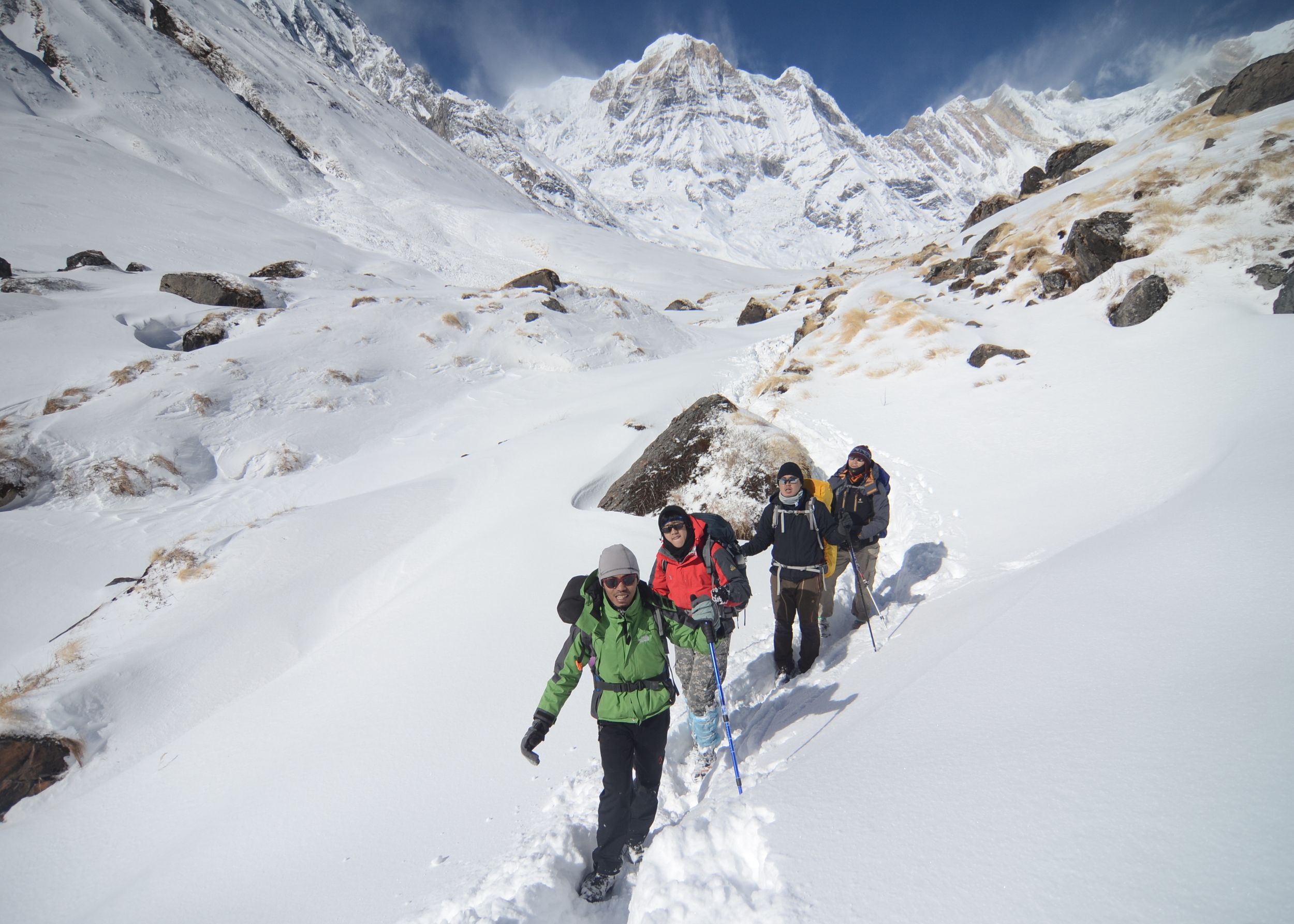
Wearing appropriate clothing for the conditions is a good starting point. The golden rule for survival is staying warm and dry, so wear layers to increase insulation, and bring an insulated, waterproof jacket (or a lightweight down jacket and waterproof top-layer) to keep out the elements. Wear a warm hat to reduce heat loss through your head and bring decent gloves, thick trekking socks and waterproof boots to reduce the risk of frostbite.
Gearing up does not have to be expensive; everything you need is available cheaply in Kathmandu or Pokhara, both new and second-hand. Most of the time you won't need to wear everything – even above the snow line you can get by in a t-shirt and shorts when your body is warm from exertion, so long as you wrap up quickly when you stop moving. But when the sun goes down and the mercury plummets, all-weather clothing can save your life.
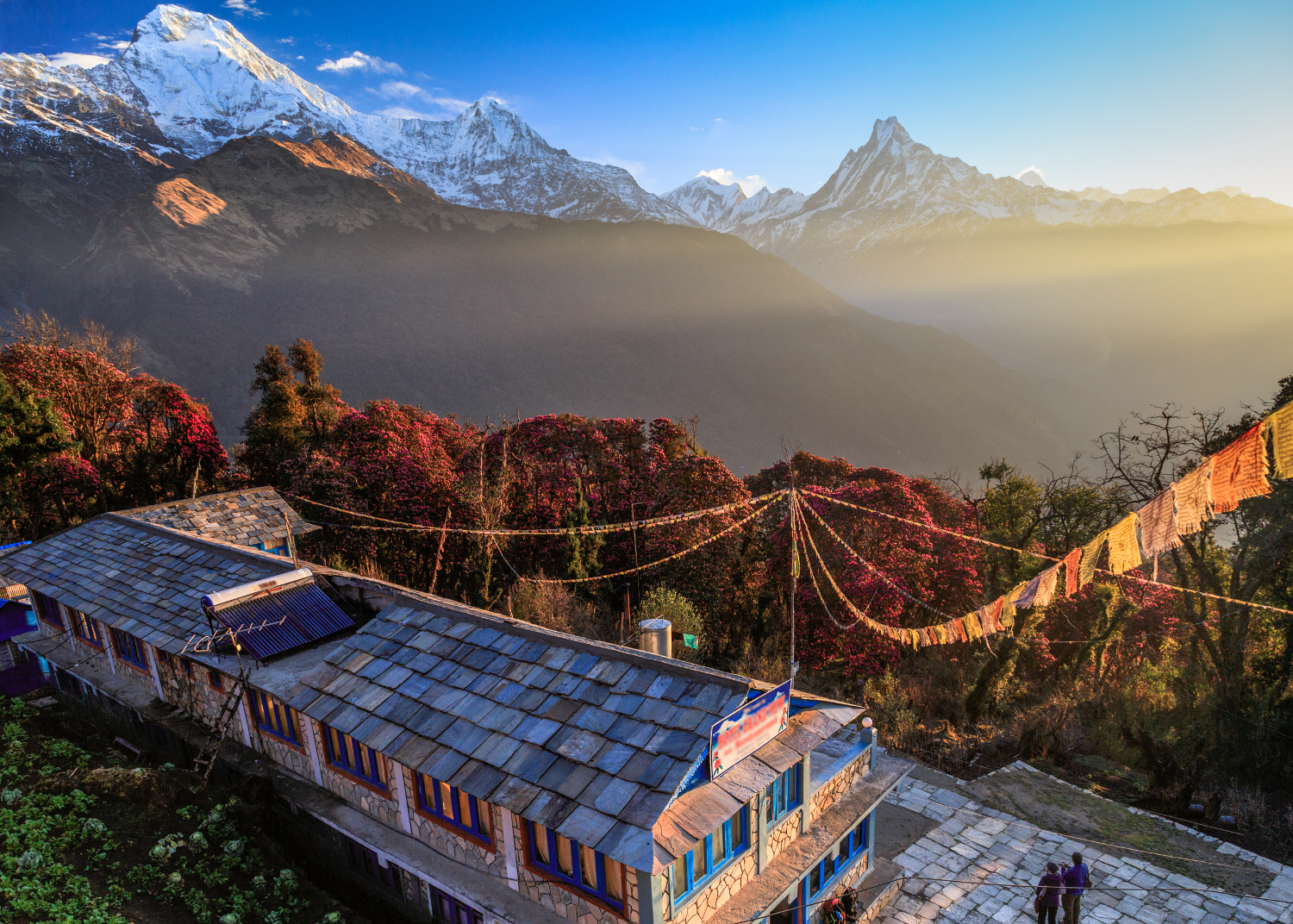
Another life-saving piece of kit is a survival bag – combined with a sleeping bag, this lightweight piece of plastic can help keep your body temperature above the critical level if you are caught outdoors without shelter. The importance of shelter should never be underestimated; with a roof over your head, or a tent and a warm sleeping bag, even the worst blizzard is just snow falling outside. Most of those who survived the Annapurna blizzards took shelter in scattered lodges instead of trying to push through to the next big settlement.
You should also be ready with an answer to the question: when will I take shelter? Will you wait till the conditions get really bad, or will you set up camp if you see signs that things are starting to go the wrong way? Make a mental note of the lodges you pass and how far you are from the closest shelter. People who are mentally prepared fare better in disasters - there's a reason that stewards on flights ask you to note the nearest emergency exit. Going back to a lodge you have already seen is almost always safer than going forwards to a lodge that might not be open.
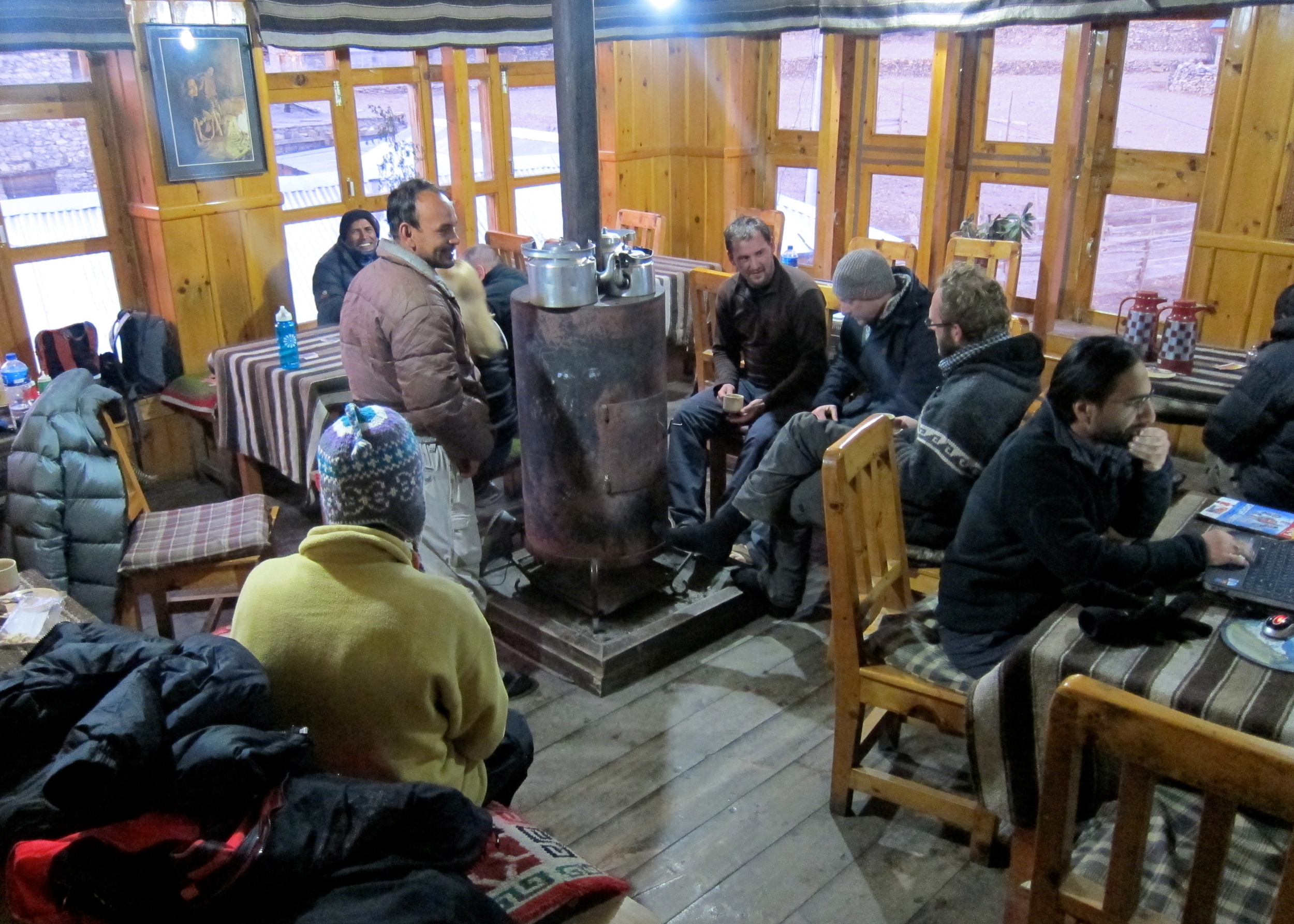
If all else fails and you do get caught outside, look for anything that might offer shelter from the elements – a cave, a hollow in the ground, a large rock, a stone chorten (stupa). Keeping dry and out of the wind is the best way to avoid hypothermia. Even snow can act as insulation and provide protection from the wind, so dig a snow cave if there are no other options. Once you have found shelter, wrap up as warmly as you can in dry clothing and share body warmth with trekking companions. If you can build a fire, do it. If you can heat water, fill your drinking bottle and tuck it inside a sock as an improvised hot-water bottle.
Another question you should ask yourself is how long you can survive with what you are carrying in your pack. The average human being can go without food for around eight weeks; without water, death from dehydration can occur in three to five days. Buying bottled water as you trek is bad for the environment and bad for safety; if you can't purify your own water, you'll be at risk of all sorts of illnesses if you end up drinking from streams and puddles to survive.
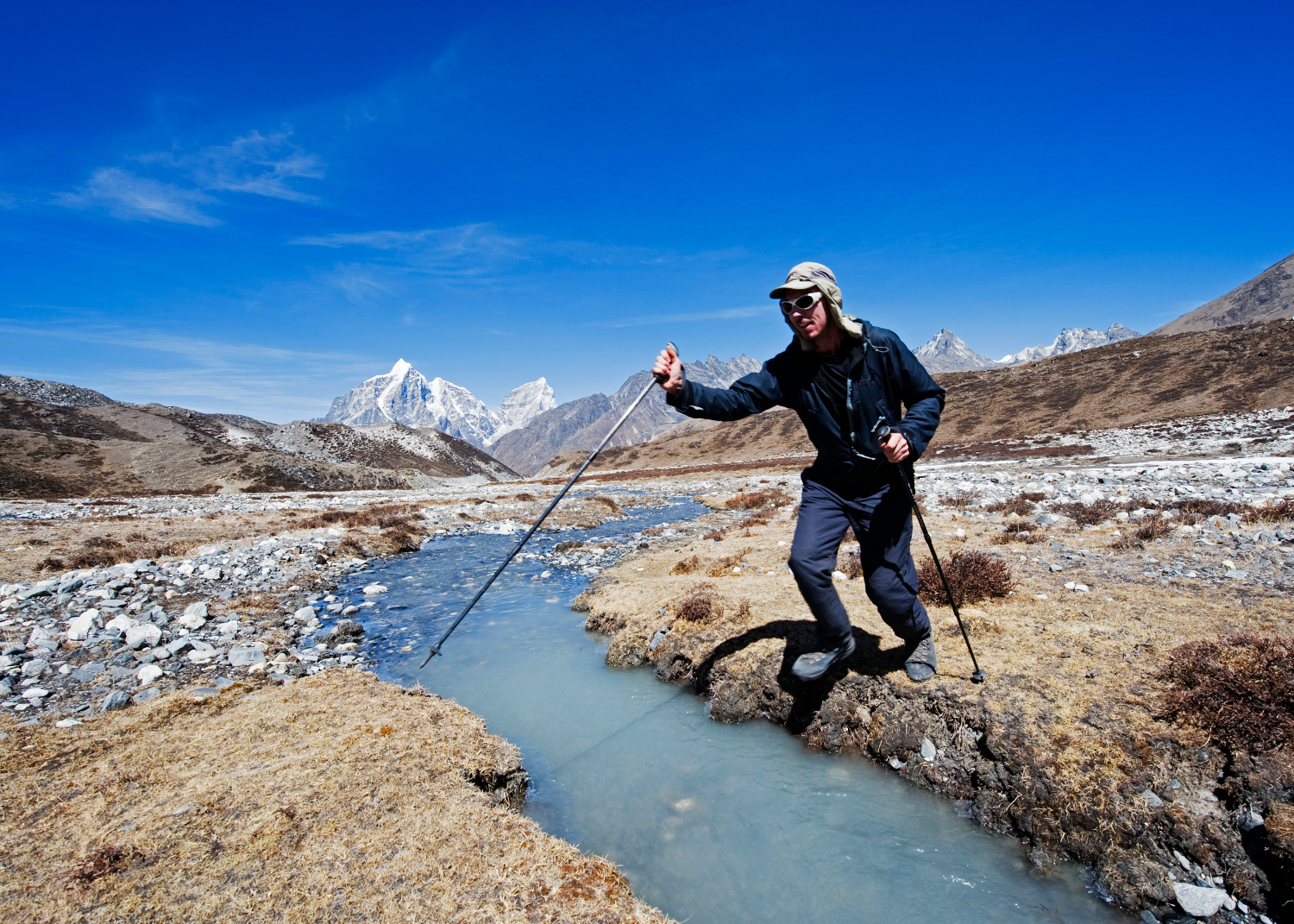
A water purification system or Iodine tablets and a water bottle will add little to the weight of your pack and can turn any water you come across in the environment into safe drinking water. If you can't find running water, melt ice or snow in a bottle between layers of your clothing. Only eat un-melted ice and snow as a last resort as this can lower your body temperature. As far as food goes, carry some high-calorie, high-fat and carbohydrate snacks for emergencies – raisins and peanuts, dried meat, energy bars and chocolate bars are old favourites.
Another essential tip is to turn to local people for advice. Trekking with an experienced guide is safer than going it alone, but your guide should also be talking to people who live in the places you pass through to keep abreast of potential hazards on the trail ahead. As a back-up, carry a map and compass or a GPS device with base maps for the area, but bear in mind that both of these will be a poor substitute for travelling with someone who knows the terrain and trails, and more importantly, knows where you are going. On any trek, be sure to let people know the route you are taking and when you will be back - nobody will come looking for you if they don't know you are missing.
And safety loves company. We won't say don't trek alone, but trekking unaccompanied is more risky than going with a guide or trekking with friends. Amongst other things, you'll have someone to share the experience of being in this spectacular environment, and someone who can help you get to safety if you have an accident, even if it's something as mundane as a sprained ankle.
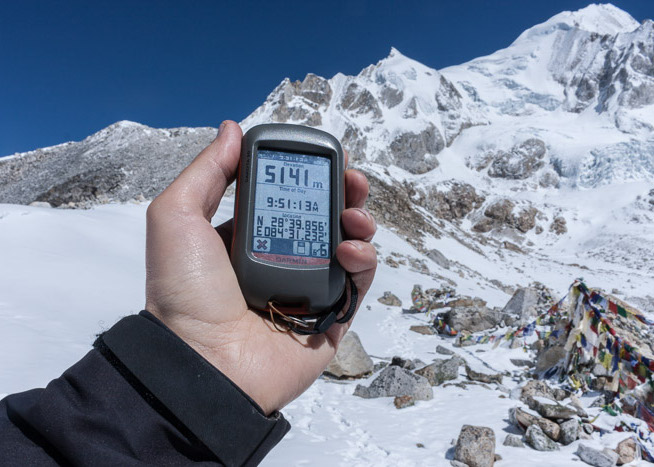
Never let your schedule override your safety. Rigidly sticking to a plan regardless of the conditions is a fast-track to trouble. It always makes sense to build a few spare days into your trekking plans, rather than tying yourself to an exit flight from the mountains that you can only catch if every single day goes according to plan. You'll have a much more enjoyable trek if you don't feel stressed about getting to the finish line, and if you finish early, you can always enjoy an extra day or two relaxing surrounded by some of the world's most spectacular scenery.
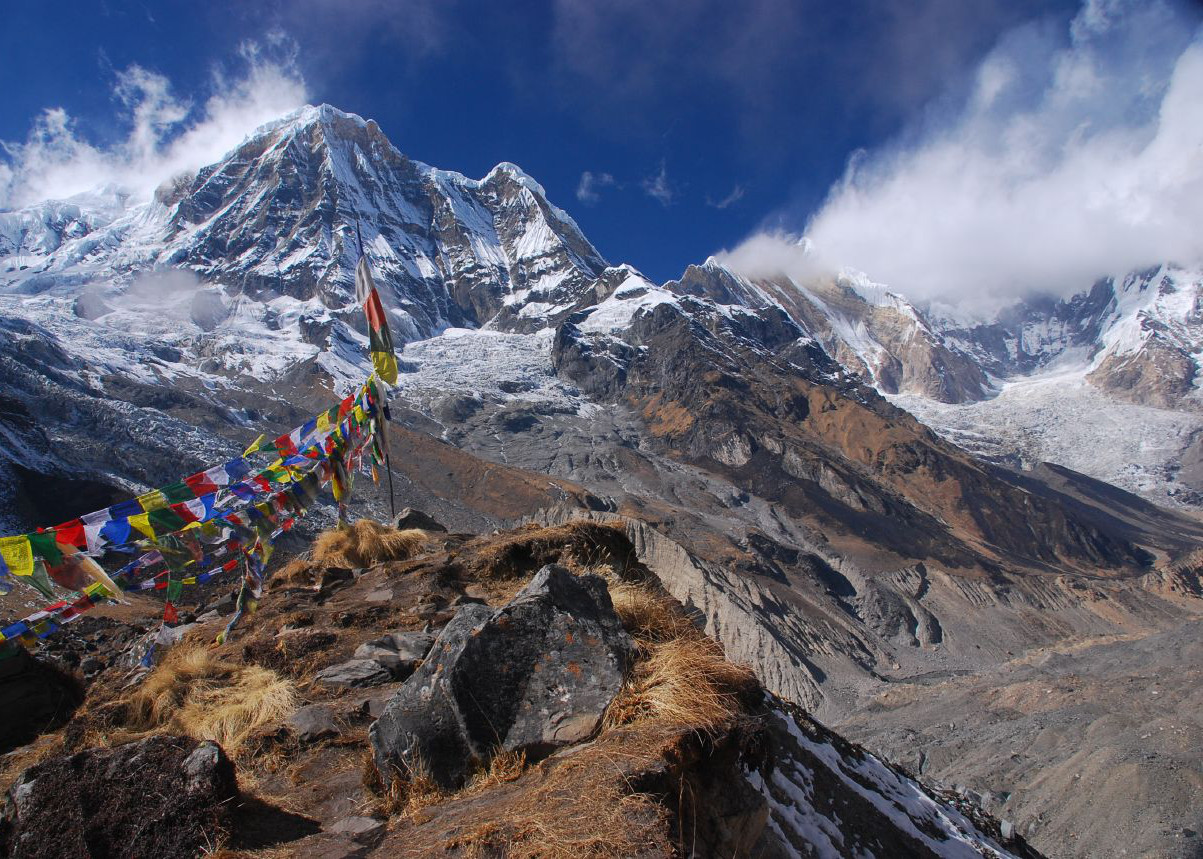
The final thing to remember is that trekking in Nepal is overall a very safe activity. Every year, more than 100,000 trekkers head for the trails in the Nepal Himalaya and only a tiny number of people have any problems on their trek. By taking a few simple precautions, you can lower the risks even further and concentrate on enjoying some of the most dramatic landscapes on earth.